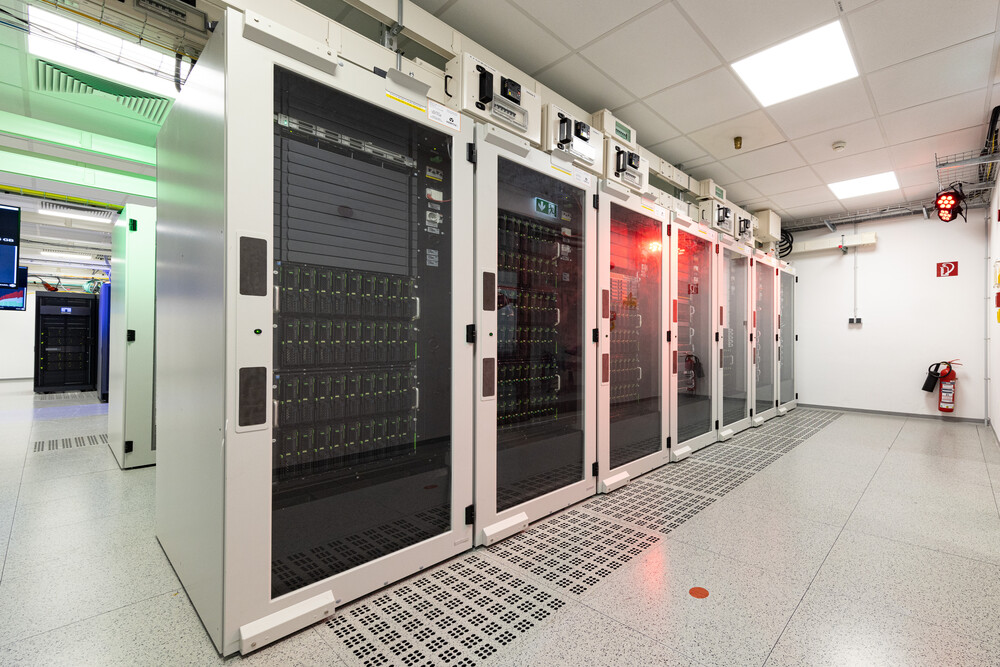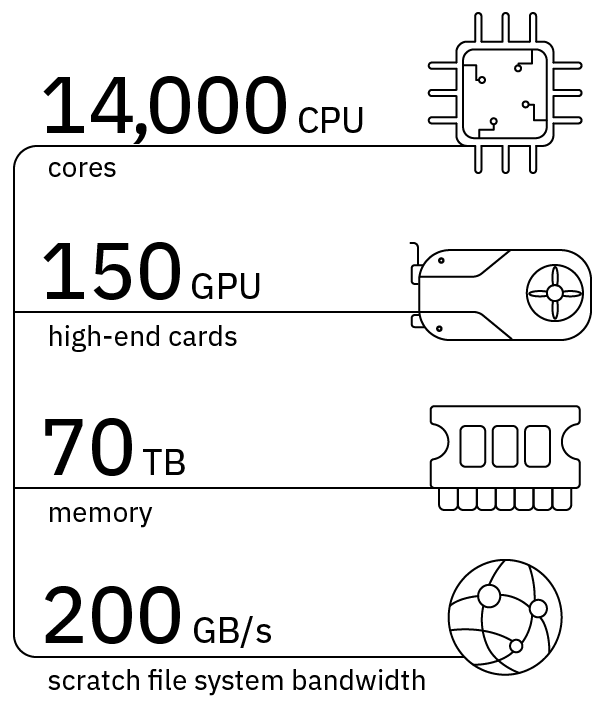High Performance Computing
Scientific data analysis at EMBL to a large extent relies on access to high-performance computing. An increasing number of users, presently about 40% of all EMBL scientists, implement HPC as part of their data analysis workflows. In 2020 these users spent about 3300 CPU years spread across more than 24 million compute jobs using one of the key number crunching resources, the EMBL Heidelberg’s HPC cluster. This facility primarily supports the needs of local researchers but also offers capacity to the wider scientific EMBL community. Based on latest Intel and AMD technology this facility presently provides access to more than 10,000 CPU cores and a total RAM/memory of 70 TB. The cluster further integrates compute power using GPU hardware, based on recent Nvidia Ampere hardware and adding about 680 TFLOPS of floating point performance. The underlying parallel file system is designed to offer about 200GB/s of bandwidth to support the massive I/O needs found with data intensive bioinformatics and computational biology HPC workloads.
Cloud Technology
IT virtualisation and cloud technology are vital to on-demand IT services delivery at EMBL. With completely virtualised data centres at EMBL Heidelberg, Rome and Barcelona, the IT Services are able to provide large-scale robust, scalable, flexible and cost-effective IT services to EMBL users. The IT team operates a growing number of both virtualised servers (VMs) and containers (based on Kubernetes) on their platforms providing core IT services as well as specialised servers and services hosted for scientific and non-scientific groups across EMBL. In addition, there are dedicated cloud areas to support the needs of EMBL Scientific Groups and Core Facilities. For example, the EMBL 3D Cloud has been designed for researchers involved in imaging and Big Data analysis and who routinely exploit machine learning. Using cloud-based GPU power, it offers remote visualisation and image data analysis capacities at the scale of highest-end graphics workstations and at the same time fully exploiting the performance of the data centre infrastructures in terms of I/O performance, etc.
Further to the provisioning of container-based cloud services built on Kubernetes and leveraging S3-compatible object storage, OpenStack is used to run workloads for both associated de.NBI projects and EMBL projects. The IT Services also support the integration of commercial and public cloud services to broaden their portfolio of innovative IT services.


